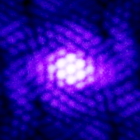|
Main Sequence Star Surrounded by Material Closely Orbiting
|
|
| JackDole | Date: Monday, 18.01.2016, 22:25 | Message # 31 |
 Star Engineer
Group: Local Moderators
 Germany
Germany
Messages: 1742
Status: Offline
| Quote DoctorOfSpace (  ) About as likely as aliens.
Speaking of aliens, maybe someone used the star as a gas station and draws off energy. 
Quote Watsisname (  ) I understand the temptation to invoke that mysterious thing we call 'dark matter' to explain any odd observation involving things looking dimmer than they should.
Dark matter has been 'invented' because otherwise the existence of galaxies could not be explained. Simply speaking. Now there seems to be something that's apparently not be explained with known things. Perhaps we need to 'invent' something new. 
Don't forget to look here.

Edited by JackDole - Monday, 18.01.2016, 22:45 |
| |
| |
| DoctorOfSpace | Date: Monday, 18.01.2016, 23:07 | Message # 32 |
 Galaxy Architect
Group: Global Moderators
 Pirate
Pirate
Messages: 3600
Status: Offline
| Quote JackDole (  ) maybe someone used the star as a gas station and draws off energy.
That wouldn't really explain the decrease in luminosity though.
Intel Core i7-5820K 4.2GHz 6-Core Processor
G.Skill Ripjaws V Series 32GB (4 x 8GB) DDR4-2400 Memory
EVGA GTX 980 Ti SC 6GB
|
| |
| |
| Watsisname | Date: Tuesday, 19.01.2016, 01:49 | Message # 33 |
 Galaxy Architect
Group: Global Moderators
 United States
United States
Messages: 2613
Status: Offline
| Quote JackDole (  ) Dark matter has been 'invented' because otherwise the existence of galaxies could not be explained.
Dark matter is required to understand the observed galactic rotation curves, the velocity distribution of galaxies within clusters, the gravitational lensing by clusters, the formation of the cosmic web, and the rate of change of the expansion of the universe according to the Friedmann equations.
So... it explains quite a lot. 
More precisely, over the last several decades, we've accumulated a large number of independent observations which lead overwhelmingly to the conclusion that either our understanding of gravitation needs to be modified, or that there is a lot more mass in the universe than what we detect visually, which we call 'dark matter'. This is a big deal, because these observations are indicative of something really profound that we were missing. This is not even in the same ballpark as "oh look here's a single star which seems to be dimming in a weird way." We're talking of a systematic failure of our understanding of the entire universe.
A lot of researchers have tried the modified gravitation route. Some still are. So far, it does not seem to work. There has not been found any unique fix to the model of gravitation which agrees with all the observations. But there is one single modification to our understanding of the contents of the universe, which does agree with all the observations. In fact, it has been so successful that the concordance model of cosmology is literally named for it. (The "Lambda-CDM" model, where CDM stands for "cold dark matter", and lambda refers to the cosmological constant.)
Quick suggestion. You're speaking to someone who studies cosmology and astrophysics for a living. Please don't try to tell me why dark matter was proposed unless you really understand what you're talking about. 

|
| |
| |
| JackDole | Date: Tuesday, 19.01.2016, 10:25 | Message # 34 |
 Star Engineer
Group: Local Moderators
 Germany
Germany
Messages: 1742
Status: Offline
| Quote Watsisname (  ) This is not even in the same ballpark as "oh look here's a single star which seems to be dimming in a weird way."
How do you know that? I think there was earlier little things that have destroyed entire systems of thought. (I do not have a reference.)
I think that these problems are all not shown up at once,
Quote Watsisname (  ) observed galactic rotation curves, the velocity distribution of galaxies within clusters, the gravitational lensing by clusters, the formation of the cosmic web, and the rate of change of the expansion of the universe according to the Friedmann equations.
but have little by little accumulated.
Don't forget to look here.

|
| |
| |
| Watsisname | Date: Wednesday, 20.01.2016, 01:01 | Message # 35 |
 Galaxy Architect
Group: Global Moderators
 United States
United States
Messages: 2613
Status: Offline
| That is not how paradigm shifts happen in science. They certainly begin with the first hint that something is odd, but this does not mean that every time you find something odd, you should suppose everything you thought you knew is wrong, or propose some wild new physics to explain it. You first look to the simpler explanations. Maybe the data are wrong or you are misinterpreting them. Maybe the data are right but they have a mundane explanation.
It is not until you have a large amount of independent evidence, all pointing towards the same conclusion, that more radical proposals become attractive. You can certainly propose whatever you want whenever you want anyway, but you still have to do the work of seeing if that proposal works, and chances are very good that it won't.
Conveniently, I think this is summarized brilliantly in a post by astrophysicist Brian Koberlein, titled Confluence of Evidence. Consider it required reading. 

|
| |
| |
| JackDole | Date: Wednesday, 20.01.2016, 01:34 | Message # 36 |
 Star Engineer
Group: Local Moderators
 Germany
Germany
Messages: 1742
Status: Offline
| Well, my suggestions were not too seriously - just a bit. 
But it may nevertheless turn out that the phenomena around the star is severe. Of course, one must first search for simple and familiar explanations, even if that's just a waste of time. 
There is in my opinion no way to decide whether it's important or not, before the problem is resolved. Perhaps this star is dancing on the big ball! 
Don't forget to look here.

|
| |
| |
| n0b0dy | Date: Wednesday, 20.01.2016, 09:39 | Message # 37 |
 Explorer
Group: Users
 Pirate
Pirate
Messages: 297
Status: Offline
| Has anybody thought of this:
An interstellar cloud of matter (dust/rogue planets, dwarf planets,asteroids,planetoids/gases) that has passed in between this star and our star during the course of time sometime between 500AD and now. And now we recieve this as fluctuations in this star's luminocity.
This interstellar cloud would probably have been passing much closer to this star otherwise it would affect luminosity of other nearby stars
Edited by n0b0dy - Wednesday, 20.01.2016, 09:43 |
| |
| |
| JackDole | Date: Wednesday, 20.01.2016, 12:15 | Message # 38 |
 Star Engineer
Group: Local Moderators
 Germany
Germany
Messages: 1742
Status: Offline
| Quote n0b0dy (  ) Has anybody thought of this:
Yes, 
but such clouds or objects are invisible only in visible light, they are 'visible' in the microwave range.
Don't forget to look here.

|
| |
| |
 ENG
ENG




 Germany
Germany 






 Pirate
Pirate  United States
United States 



